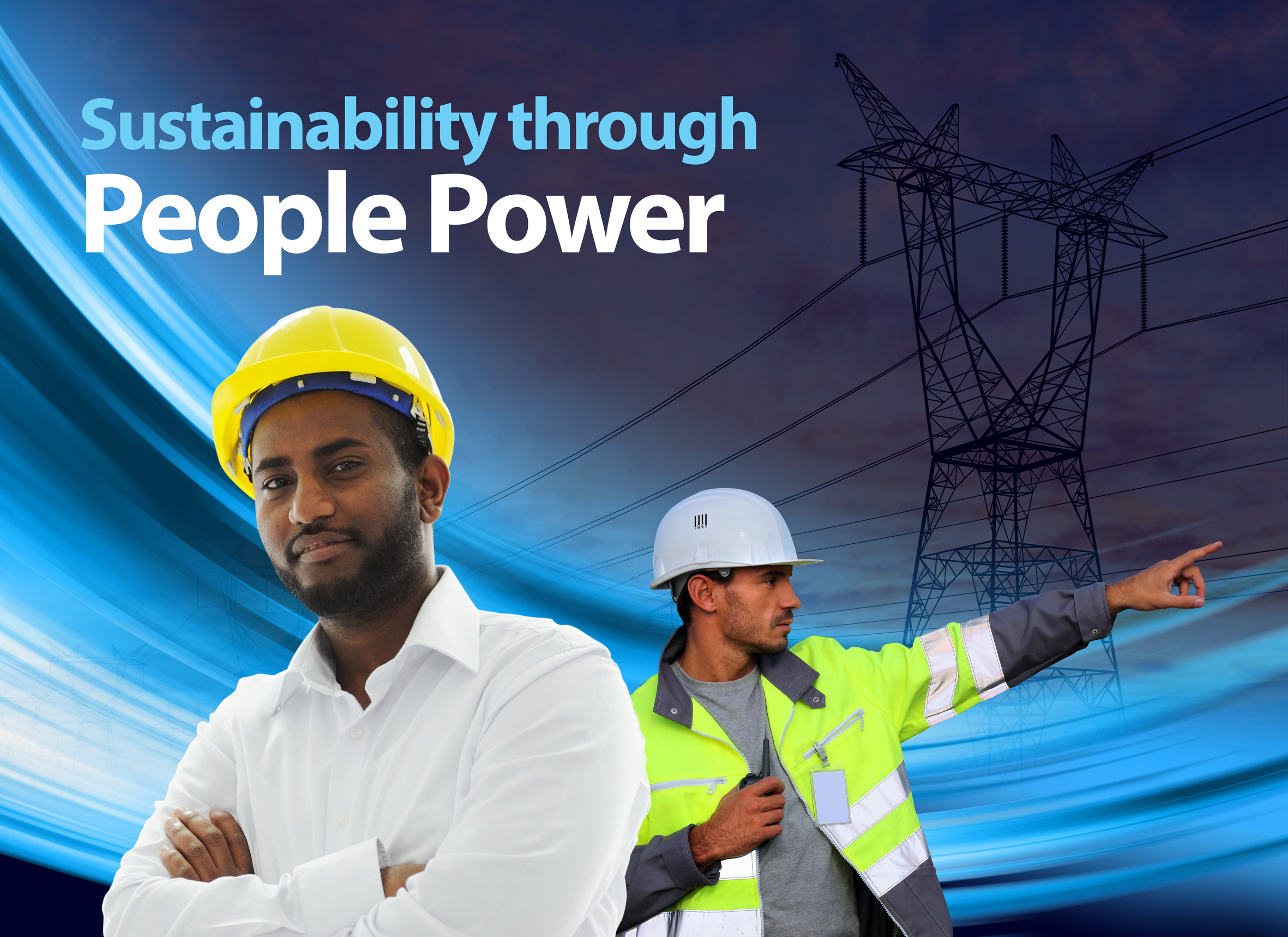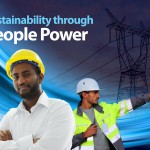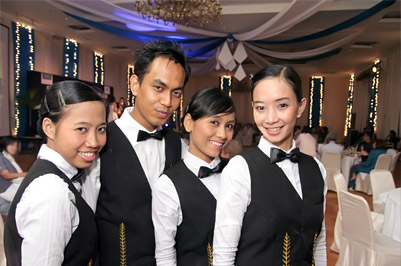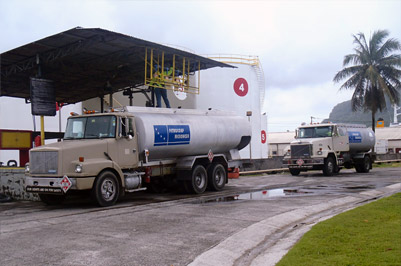
Aspiring to environmental sustainability in the power industry is a worthy goal. Hand-in-hand with that environmental sustainability, though, must be the sustainability of the organisation: its longevity, its ability to remain diverse and productive; to balance outputs
and outcomes with finite resources; and to do so without exhausting its most precious resource: its people.
Without the energy and enthusiasm of those people, the best-intentioned sustainability initiatives will remain just that: intentions. Advanced technology will always need people to run it. New infrastructure needs people to build and maintain it. And new thinking needs people to turn it into a reality. We still need people power to make our organisations run efficiently and effectively.
The best way to harness that ‘people power’ is to connect those people to the organisation they work for; to give them purpose. Taking the corporate view of the organisation—i.e. what it wants to be to its stakeholders (its vision) and how it wants to get there (its mission)— and cascading that to every individual employee in a meaningful way results in personal accountability and leadership at every level. Each employee has a purpose, and understands as well as believes in the personal contribution that their role makes to the organisation as a whole.
We call this the Line of Sight.
The Line of Sight
Our Line of Sight approach comprises a set of decisions and actions designed to help an organisation to answer the following questions.
Where are we going?
Completing these steps gives the organisation a clear picture of what it wants to be (vision), how it plans to reach that goal (mission), and the mechanisms of control to be used over the journey (corporate governance).
How are we going to get there?
These steps involve the creation of an agreed pathway to achieving the corporate vision (strategy), establishing the outcomes we need to manage (Key Result Areas), and cascading those outcomes down to individual tasks (processes and procedures).
Who is going to help us?
These steps involve providing people with the knowledge and skills necessary to execute the processes and procedures (training), assessing their capability to apply the training in the workplace (assessment), and providing people with the long-term support they need to grow and take on new responsibilities (competence development).
How we’re harnessing People Power in the Pacific
In late 2010, Change Factory began working with FSM Petroleum Corporation, trading as Vital, to help them develop a corporate vision and mission. Over the last three years, our work in helping them to implement their Line of Sight has included the completion of procedure and process documentation for more than 650 individual procedures, coaching training for managers, coaching and development for the board, a Health, Safety, Security and Environment (HSSE) training programme for all staff, an overhaul of the
remuneration system to implement competency-based pay, and the design and development of a personal leadership programme designed to unlock individual talent and give each staff member insight into how their day-to-day work contributes to the overall success of the organisation, while also teaching them about how the company functions as a whole.
It’s this last achievement we’re particularly proud of: we call it iLead. It’s a programme designed from the ground up for Pacific audiences with Pacific priorities, and it’s generated some incredible changes in the way individual people approach their work, including some who have gone back to study to qualify for a new role within the organisation.
However, the results of aligning Vital’s Line of Sight go beyond individual success stories. Since we became involved with Vital,
the price of fuel in Pohnpei has fallen from a 30% premium on Guam prices, to the point where they are now at parity—a feat
that wouldn’t have been possible without the ability of the Line of Sight to free up management from the day-to-day task of supervising individual employees, allowing them instead to focus on strategic expansion and improvements in efficiency. This has made a significant difference to the lives of the residents of Yap, Chuuk, Pohnpei and Kosrae.
Now, we’re embarking on a similar programme with South Pacific Oil in Solomon Islands, working with them to harness their People Power with their own Line of Sight.
3 Questions for you to ask
When you finish reading this, write down the following three questions. Take them to as many of your employees and colleagues as you can, and ask:
- What’s our vision?
- What are our Key Result Areas?
- How does your role contribute to the success of this organisation?
If you get wildly conflicting responses to the first two questions, and blank looks for the third, it might be time to look at your own Line of Sight, and consider how well you are placed to build a sustainable business into the future with your own People Power.
For a pdf version of this paper, download Sustainability Through People Power.







